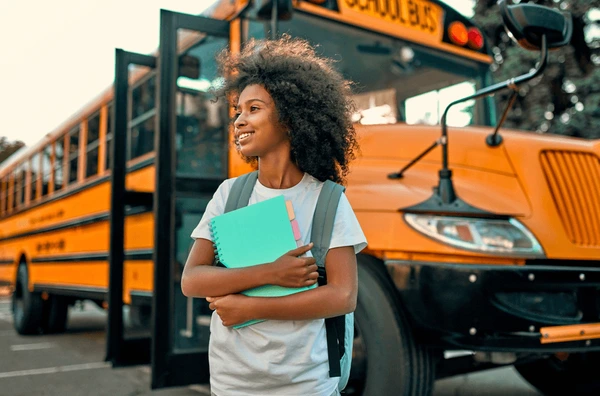JAKARTA, incaschool.sch.id – Classroom inclusion is a vital aspect of modern education, emphasizing the importance of creating an environment where all students, regardless of their backgrounds, abilities, or needs, feel valued and supported. This approach not only enhances the learning experience for individual students but also fosters a sense of community and belonging. In this article, we will explore the principles of classroom inclusion, its benefits, and practical strategies for educators to ensure that every student is welcomed equally.
Understanding Classroom Inclusion

What is Classroom Inclusion?
Classroom inclusion refers to the practice of integrating all students into general education classrooms, providing them with equal opportunities to participate in learning activities. This includes students with disabilities, those from diverse cultural backgrounds, and individuals with varying learning styles. The goal is to create a supportive environment that accommodates the needs of all learners.
Why is Classroom Inclusion Important?
- Equity in Education: Inclusion promotes equity by ensuring that all students have access to the same educational opportunities, resources, and support.
- Diverse Perspectives: A diverse classroom enriches the learning experience by exposing students to different perspectives, cultures, and ideas.
- Social Development: Inclusion fosters social skills and empathy among students, helping them learn to appreciate diversity and collaborate with peers from various backgrounds.
- Improved Academic Outcomes: Research shows that inclusive classrooms can lead to improved academic performance for all students, as they benefit from collaborative learning and peer support.
Strategies for Promoting Classroom Inclusion
1. Create a Welcoming Environment
A welcoming classroom environment is essential for fostering inclusion. This can be achieved by:
- Displaying Diverse Materials: Use books, posters, and resources that reflect diverse cultures, languages, and experiences.
- Encouraging Open Communication: Foster an atmosphere where students feel safe to express their thoughts and feelings without fear of judgment.
2. Differentiate Instruction
Recognizing that students have varying learning styles and abilities is crucial for inclusion. Educators can differentiate instruction by:
- Using Multiple Teaching Methods: Incorporate visual, auditory, and kinesthetic learning activities to engage all students.
- Providing Flexible Assessments: Allow students to demonstrate their understanding in various ways, such as through projects, presentations, or written assignments.
3. Foster Collaborative Learning
Group work and collaborative learning activities can enhance inclusion by promoting teamwork and peer support. Strategies include:
- Diverse Grouping: Create heterogeneous groups that mix students of different abilities, backgrounds, and perspectives.
- Structured Peer Support: Assign roles within groups to ensure that every student has a chance to contribute and support each other.
4. Provide Individualized Support
Some students may require additional support to thrive in an inclusive classroom. Educators can provide individualized support by:
- Implementing IEPs and 504 Plans: Work closely with special education staff to develop and implement individualized education plans for students with disabilities.
- Offering Additional Resources: Provide access to tutoring, mentoring, or counseling services for students who may need extra assistance.
5. Encourage Student Voice and Choice
Empowering students to have a say in their learning fosters a sense of ownership and inclusion. Educators can encourage student voice by:
- Involving Students in Decision-Making: Allow students to contribute to classroom rules, project topics, and learning activities.
- Offering Choices in Assignments: Give students options for how they complete assignments or projects, allowing them to choose formats that best suit their strengths.
6. Continuous Professional Development
Educators should engage in ongoing professional development to stay informed about best practices in inclusive education. This can include:
- Workshops and Training: Participate in workshops focused on inclusive teaching strategies, cultural competency, and disability awareness.
- Collaboration with Colleagues: Share experiences and strategies with fellow educators to enhance collective knowledge and practices.
Real Stories of Successful Classroom Inclusion
Story 1: A Diverse Learning Community
In a fifth-grade classroom, Ms. Johnson implemented a variety of teaching methods to accommodate her diverse group of students. She used visual aids, hands-on activities, and group discussions to engage all learners. By fostering a collaborative environment, students learned to appreciate each other’s strengths and support one another, leading to improved academic outcomes and stronger friendships.
Story 2: Empowering Student Leadership
Mr. Smith encouraged his high school students to take leadership roles in their learning. He created a student advisory board where students could voice their opinions on classroom activities and policies. This initiative not only empowered students but also fostered a sense of belonging and ownership in their education, making the classroom a more inclusive space.
Story 3: Tailored Support for Success
In a middle school science class, Ms. Lee worked closely with students with individualized education plans (IEPs) to provide tailored support. She collaborated with special education staff to ensure that students received the accommodations they needed. As a result, all students were able to participate actively in experiments and discussions, leading to increased engagement and understanding of the subject matter.
Conclusion
Classroom inclusion is essential for creating an equitable and supportive educational environment. By implementing strategies that promote diversity, collaboration, and individualized support, educators can ensure that all students feel welcomed and valued. The benefits of inclusion extend beyond academic performance, fostering social skills, empathy, and a sense of community among students.
Improve Your Abilities: Explore Our content on Knowledge
Take a Look at Our Latest Article on Digital Resources!


